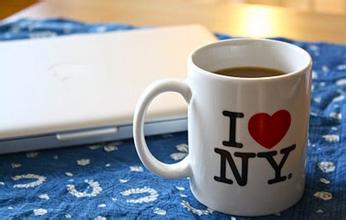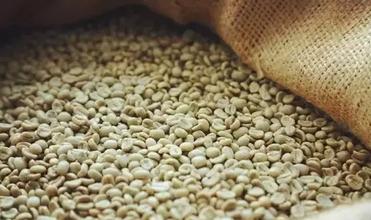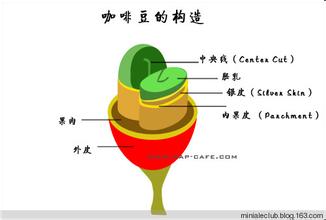Description of Flavor of Yunnan small Coffee beans
Description of Flavor of Yunnan small Coffee beans
1) add an appropriate amount of pure water to the lower seat of the siphon kettle (heated pure water can be used to shorten the time of boiling water. In this operation, the amount of water added is 2.5 cups, that is, about 280 milliliters, two cups of water is for guests / friends, and the extra half cup is for the brewers to taste in advance. If the taste is abnormal at that time, do not give it to the guests, hehe)
2) when there is enough fuel in the alcohol lamp, ignite it and place it directly under the lower seat of the siphon kettle.
3) fix the filter with filter cloth / filter paper on the upper seat of the siphon kettle and make sure that the position of the filter is in the center (if the position is off, it can be adjusted with a bamboo stirring rod)
4) pour the right amount of coffee powder (2.5 cups of water corresponds to about 37 grams of coffee powder, which can be adjusted according to your taste) into the upper seat of the siphon pot. Shake the upper seat horizontally so that the coffee powder is evenly covered with the filter
5) insert the upper seat of the siphon pot obliquely into the lower seat, but not tightly (if the upper seat is inserted after the water is boiled, boiling hot water may suddenly erupt, which is quite dangerous, remember! )
6) when the water in the lower seat is boiling completely, move the alcohol lamp away for about 10 seconds, then move it back, but do not put it directly under the lower seat, it should be slightly off the center. This has two purposes: one is to reduce the water temperature to about 95 degrees, and the other is to reduce the firepower of alcohol lamps (as mentioned earlier, alcohol lamps are not very convenient in adjusting firepower. This is also the reason why some people rotate to use two alcohol lamps or gas stoves with adjustable firepower)
7) straighten the upper seat and insert it into the lower seat (with a little force)
8) at this time, due to the increase of pressure after heating, the water in the lower seat will flow into the upper seat along the riser of the upper seat. When there is only 1 / 3 water left in the lower seat, pour the ground coffee powder into the upper seat and pour wet coffee powder from all sides to the middle with a bamboo stick.
9) after the coffee powder is completely wet, start the clock (do not stir the coffee mixture at this time, this stage is called "stew")
10) after about 45 seconds, use a bamboo stick to quickly stir the coffee solution. After a layer of foam appears on the liquid surface, the stirring can be stopped. Wait a few more seconds, and then the alcohol lamp will be removed and extinguished.
11) wipe the lower seat with a wet rag prepared in advance to cool the lower seat; the order of wiping is to wipe the bottom first and then wipe around, and do not stay in one position for too long, lest the lower seat will burst due to uneven cooling. If you are skilled, wipe the lower seat with a rag in one hand and stir the coffee solution with a stirring stick in the other to speed up its cooling.
12) when the lower seat is not as expected, the internal pressure decreases, resulting in the coffee solution in the upper seat being sucked back to the lower seat (this is also the origin of the name of the siphon pot)
13) when the coffee solution in the upper seat is completely sucked back, pull out the upper seat and pour the coffee liquid in the lower seat into a pre-warmed coffee cup.
When the coffee solution in the upper seat is sucked into the lower seat, in the final stage, some foam will be formed above the liquid surface of the lower seat. By observing the shape of the foam, we can judge whether the heat and extraction are appropriate: if there are a large number of fine foams, it shows that the heat of brewing coffee is too large, and the taste of coffee will be quite bitter; if it is a big bubble, and it disappears after a few seconds, it shows that the heat is ideal; if there is almost no foam, it shows that the heat is not enough. If it is found that the heat is not suitable, it can be adjusted by means of increasing or decreasing the time of "stewing" in the future.

Important Notice :
前街咖啡 FrontStreet Coffee has moved to new addredd:
FrontStreet Coffee Address: 315,Donghua East Road,GuangZhou
Tel:020 38364473
- Prev

Kilimanjaro Moshi Coffee Bean Flavor Description Grind Scale Variety Taste Treatment Introduction
The main coffee producing area of Tanzania is located at the foot of Mount Kilimanjaro, which has rich volcanic soil. Coffee trees planted here are more than 100 years old. The earliest coffee was first introduced from Kenya by Christians. Coffee trees must be carefully cared for, weeded and cultivated.
- Next

Panamanian Kaddura coffee bean flavor description grinding scale variety treatment manor introduction
Panamanian Kaddura Coffee Bean Flavor description Grinding scale Variety treatment Manor introduces Panamanian Rose Summer: a rare wild variety, a regular winner of various tasting competitions in the world. The appearance of raw beans is slender, ripe beans have unexpected citrus aromas, and the aftertaste is full of flowers and sweet fruit. Absolutely unique boutique coffee Panama (Panama) exports the first batch of coffee every year in November
Related
- Detailed explanation of Jadeite planting Land in Panamanian Jadeite Manor introduction to the grading system of Jadeite competitive bidding, Red bid, Green bid and Rose Summer
- Story of Coffee planting in Brenka region of Costa Rica Stonehenge Manor anaerobic heavy honey treatment of flavor mouth
- What's on the barrel of Blue Mountain Coffee beans?
- Can American coffee also pull flowers? How to use hot American style to pull out a good-looking pattern?
- Can you make a cold extract with coffee beans? What is the right proportion for cold-extracted coffee formula?
- Indonesian PWN Gold Mandrine Coffee Origin Features Flavor How to Chong? Mandolin coffee is American.
- A brief introduction to the flavor characteristics of Brazilian yellow bourbon coffee beans
- What is the effect of different water quality on the flavor of cold-extracted coffee? What kind of water is best for brewing coffee?
- Why do you think of Rose Summer whenever you mention Panamanian coffee?
- Introduction to the characteristics of authentic blue mountain coffee bean producing areas? What is the CIB Coffee Authority in Jamaica?

